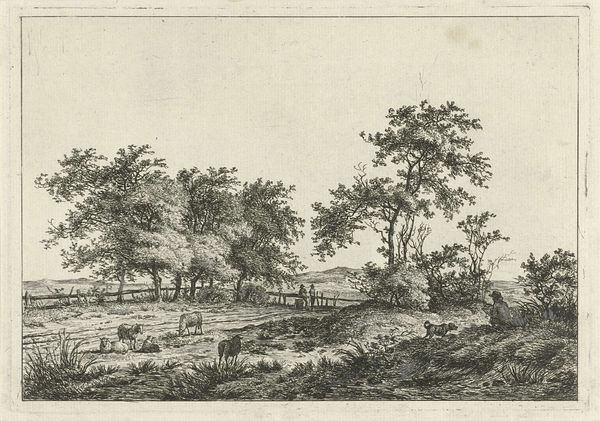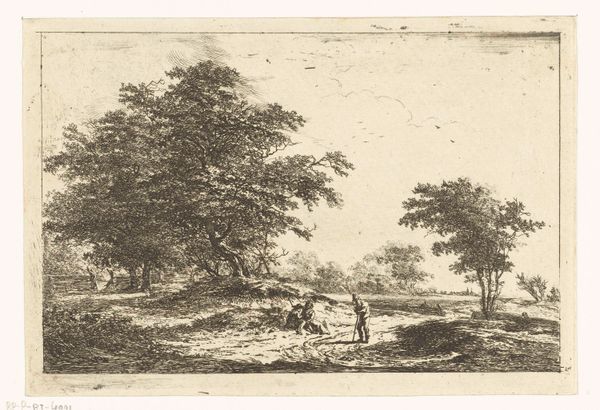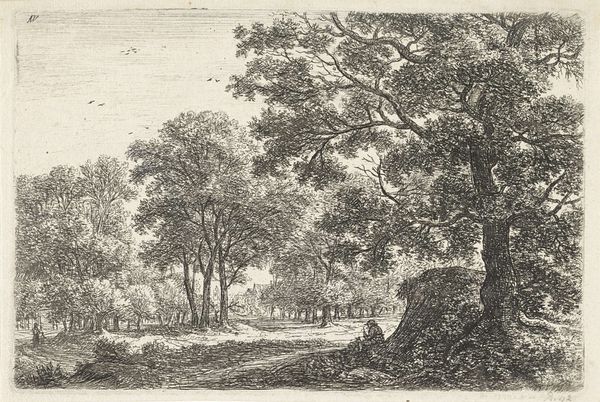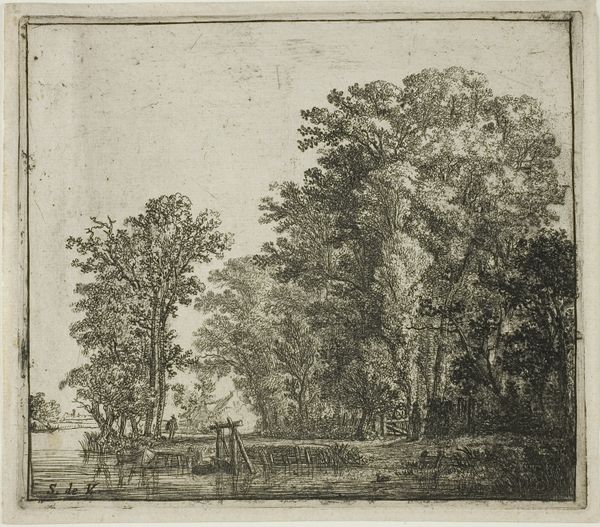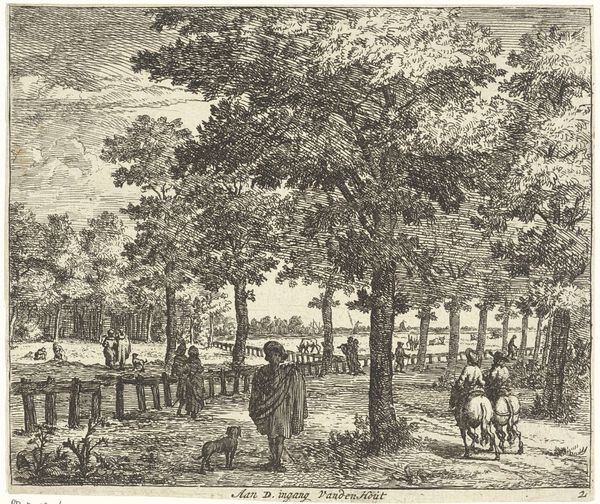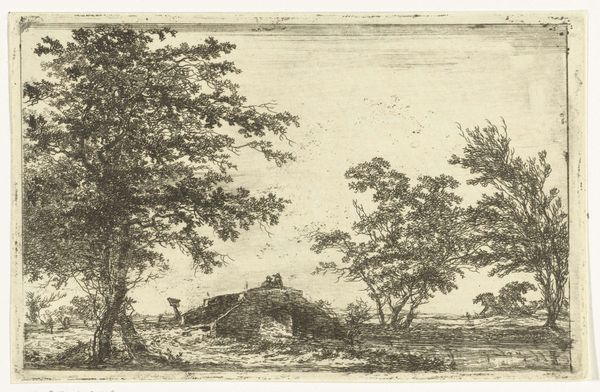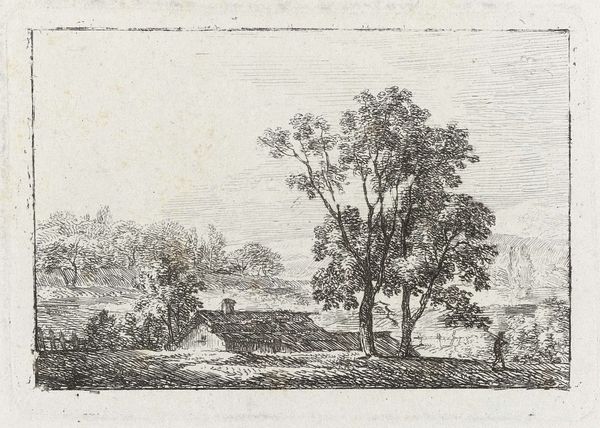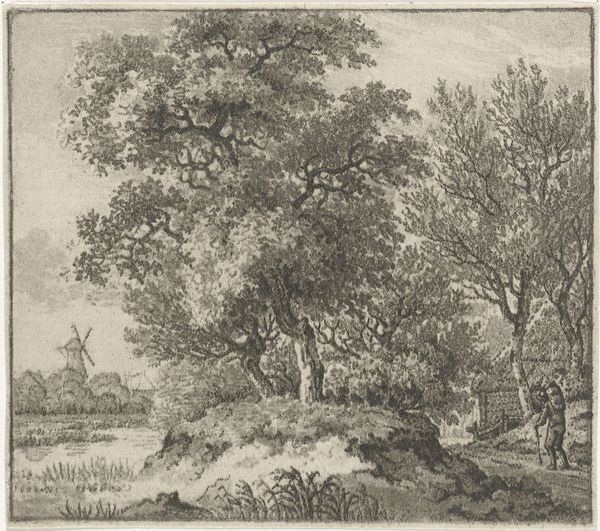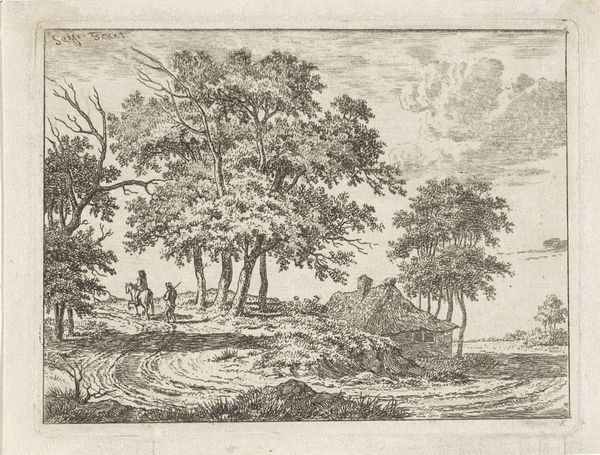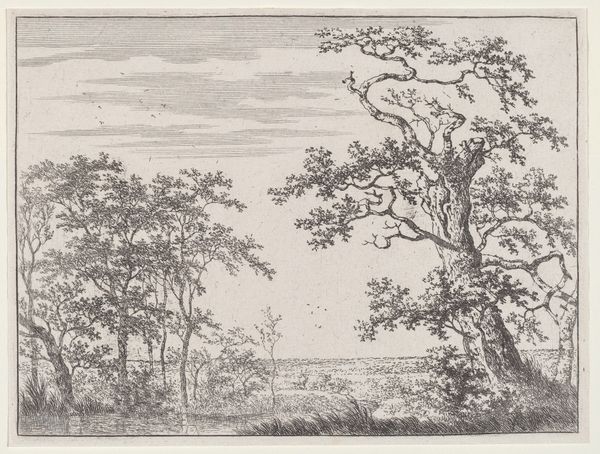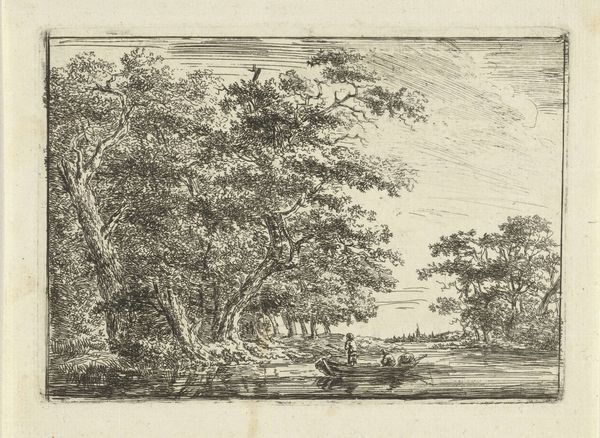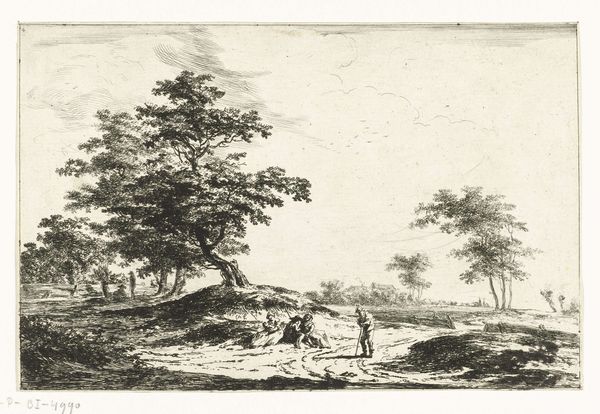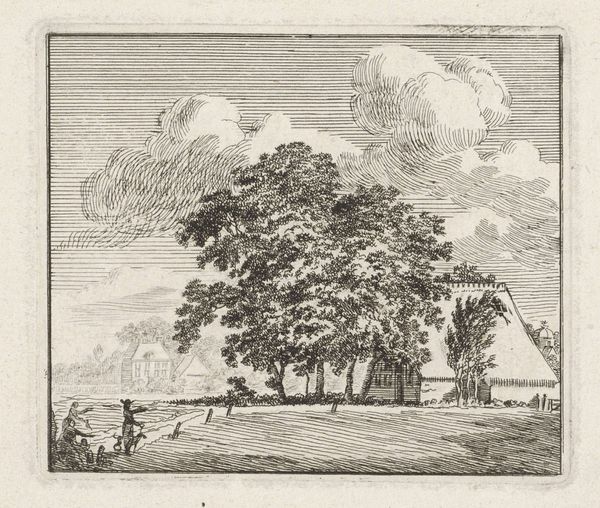
drawing, print, etching, paper
#
drawing
# print
#
etching
#
landscape
#
etching
#
paper
#
realism
Dimensions: 93 × 145 mm (image); 95 × 142 mm (sheet)
Copyright: Public Domain
Curator: Before us is "Four Men on a Stone Bridge," an etching by Anthonie Waterloo. Editor: It's gentle. The etched lines are so delicate, almost like a memory fading at the edges. The entire scene has a dreamy, wistful quality. Curator: It's undated, but Waterloo, a Dutch artist, likely created this sometime in the 17th century. What grabs my attention is how much is implied with such fine lines—the textures of the leaves, the reflection in the water… Editor: Right, and all from humble materials—metal, acid, paper. It’s about taking something ordinary and using labor—etching, in this case—to create an idealized version of everyday life. This bridge… how many real stone bridges existed then versus how many were reproduced as prints for domestic enjoyment? Curator: That tension is precisely where the artistry lies. He's taken a mundane scene, maybe one he observed countless times, and transformed it into a composition charged with understated emotion. The figures themselves are quite small, almost swallowed by the landscape, aren't they? Editor: Yes, the humans seem secondary. It makes you wonder, what kind of lives did these ordinary people lead, relying daily on their access to that waterway for irrigation, transportation, and their very livelihoods? But look closer, and those men almost appear staged—a group traversing and a boating pair whose gestures we can imagine carrying things in and out of frame. Curator: I suppose, too, the choice of etching is crucial. It’s a method reliant on replication; the artist wasn’t crafting something unique but creating multiple impressions. Editor: Mass production is everything here—the labor embedded in each impression destined for the consumer market to spread idealized imitations of land ownership and pleasure. Were these printed objects as valuable in trade and as representative of culture as we deem them today? Curator: It’s beautiful to consider the accessibility too. Works on paper democratized images. They weren’t sequestered away in the homes of the wealthy but potentially within reach of a much broader audience. Editor: Exactly! This seemingly quiet scene is buzzing with information, and its simple act of repetition speaks to economic systems far more elaborate and fraught with division and labor. Curator: In its unassuming way, Waterloo's etching resonates with echoes of the natural world but of social constructs as well. It's a delicate balancing act, to say the least. Editor: A testament to the complicated intersections of nature, labor, and art as a vehicle of commodity fetish, still reverberating today.
Comments
No comments
Be the first to comment and join the conversation on the ultimate creative platform.
